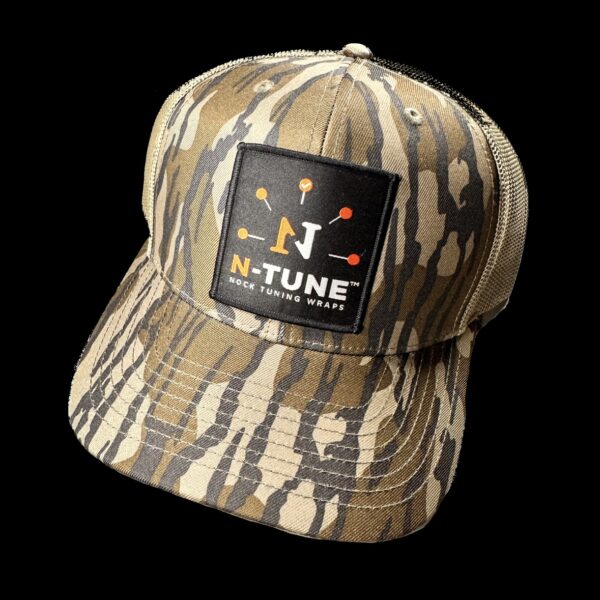One of the best outdoor activities a family can participate in is camping. And after the pandemic of 2020, many people were cooped at up home. So, what better cure for being inside than…. being outside!
And, what better way to find a renewed love for the world and the great outdoors than taking a trip into God’s creation to go camping!
So, maybe you’re looking forward to this new outdoor adventure and are wondering, “what do I need to go camping?”

Ok, so maybe you don’t need THIS to go camping, but there are some items you should definitely take on your trip!
So, we’re going to cover some of the must-have items you should get to make your trip safer and more enjoyable for you and for the family. And, we’ll also cover why each of the items on this camping necessities list is important.
- The Basics
- Tent
- Solar Powered Charger
- Fire Starter
- Pocket Knife / Multi-Tool
- First Aid Kit
- Map / GPS
- Flashlight / Lamp
Camping Necessities | Start With The Basics
Part of the beauty of camping is not having to worry so much about how you put together you look or how good you smell (ok, maybe smell is still important!)
But, even though you are going on an outdoor adventure, there are still some important things to remember when it comes to personal hygiene.

Be sure you don’t forget the toilet paper for your camping trip… OK, maybe not this much!
Soap, shampoo, toothpaste, toothbrush, and of course, toilet paper are all essential items to be sure you pack for your trip!
Also, be sure to bring your own bottles and containers for these items, because you wouldn’t want to leave any trash behind. (“Leave things better than you found” them is a good rule of thumb.)
Tent
The tent is certain at the core of your camping experience. Without a tent, you and your family are going to be exposed to potentially uncomfortable or harmful temperatures as well as insects.
There are various styles of tents, so you can go beyond the simple “unfold and pitch” style that you may have used in the past.
While there is a wide array of tent choices for camping, be sure to get one that is large enough for your family to fit comfortably inside of!
Some tents come with features such as compartments and solar panels. You can find even more options from stores like Kohls and other department or sporting goods stores.
There are even tents that connect to your car!
When purchasing a tent for your trip, make sure that it is large enough for your entire family to fit inside. (You wouldn’t want to sleep in a tent with no room to move!)
-

N1 Outdoors® Mountain Colors Tee (Various Colors)
Price range: $24.99 through $28.99 Select options This product has multiple variants. The options may be chosen on the product page -
Sale!

N1 Outdoors® CLIMB. Tee
$19.00 Select options This product has multiple variants. The options may be chosen on the product page -
Sale!

N1 Outdoors® CAMP. Tee (Various Colors)
$19.00 Select options This product has multiple variants. The options may be chosen on the product page
Solar-Powered Chargers
One of the liberating things about camping is being one with nature and making time to disconnect yourself from technology for a few days. However, that doesn’t mean you should completely stay away from technology. Some camping gear is powered by electricity, and these items can make the trip safer and potentially more enjoyable.
One example is solar powered chargers.
A solar-powered charger ensures that you have enough energy to last the entirety of your trip. And, while disconnecting from your phone is a good practice, in the event of an emergency, these chargers can also help you stay connected to emergency services through your smartphone. So, it’s a handy thing to have on your trip.
Fire Starters
The ability to start a fire with a few pieces of stones and some tinder is an essential skill for every camper. But, what if your matches get wet or your lighter stops working… what then?
You might be a skilled fire builder already. Or, maybe you’re a newbie to everything camping related. Either way, having a tool to help you build a fire is not to be overlooked.

Fire is essential for warmth and for cooking on your camping trip, so be sure you take a fire starter with you!
So, whether you will be taking the family on an ice fishing trip, or camping in warmer weather, a part of your arsenal should always be a fire starter.
Fire starters come in many forms and most of them fit in your pocket. The concept of the fire starter is simple: You strike an object into an abrasive material, which creates sparks for starting a fire.
Some fire starters are waterproof and these are the recommended type best you can buy for your trip.
Pocket Knife / Multi-Tool
Just like a fire starter, a pocket knife or utility tool is another must for all campers (and for just about anyone who loves exploring the great outdoors.)
A pocket knife or a multi-tool will feature all of the basic tools you need for camping. These can help you do various tasks such as cooking prep and various tasks related to campsite setup.

A multi-tool contains many helpful items that will assist you in multiple expected (and unexpected) camping situations.
A good multi-tool should have the basics like a knife, a screw, a saw, and a file. Most importantly, it should fit right in your pocket. Some pocket knives can be a bit bulky and these are usually models that you’d want to avoid if you are wanting to travel as light as possible, especially if you will be camping while backpack hunting.
-

N1 Outdoors® CAMP. Leather Patch Trucker Hat
$29.99 Select options This product has multiple variants. The options may be chosen on the product page -

N1 Outdoors® Fish Arrow Patch Rope Hat
$29.99 Select options This product has multiple variants. The options may be chosen on the product page -

N1 Outdoors® Blaze Orange Leather Patch Hat
$26.99 Select options This product has multiple variants. The options may be chosen on the product page
First Aid Kit
Although you are going on your trip to relax and enjoy the great outdoors, you never know when when an unexpected accident could occur. After all, being able to respond to minor wounds and injuries is key in preventing more complex medical problems later on.
So, you should take the right steps to ensure that you are prepared for worst case scenarios, and that means always having a first aid kit.

While you don’t want to think about an unexpected accident occurring, a first aid kit is an essential for every camping trip.
A good camping first aid kit should include essentials such as a disinfectant, bandages, surgical scissors, splints, and band-aids.
Remember, a first aid kit is used for minor injuries only. With more serious injuries, you should seek medical attention and go straight to a hospital.
Map Or GPS
Getting lost in the forest or in the mountains is no laughing matter.
Although some campsites have employees to help you find your way out, it’s still better to be safe than sorry. If you happen to go hiking, bringing a map or a device with built-in GPS (Global Positioning System) will help you find your way should you get lost.

You want to “get away,” but no one likes being lost. A map and/or GPS is a must have for every camping trip.
Ideally, we suggest getting a GPS in addition to a map. The GPS will give you your exact location, as well as an accurate depiction of the area. Moreover, reading a map does take some practice, so it’s best to have a device as well that is more intuitive and easier to use.
Flashlight Or A Lamp
You’ve enjoyed a beautiful day out in nature and now it’s time to head off to sleep for the night. But first, you’ll need to put out the campfire. (This is a must, because a fire left unattended could spread.)
But after you’ve put out the campfire, you might still need a midnight snack or the occasional emergency bathroom break!

Moonlight is great. But, a flashlight to see in the dark on an emergency bathroom break while camping is invaluable!
So, it might seem like a no-brainer, but be sure you have a flashlight or two for your camping trip.
After all, having an alternative light source is very important, especially if inclement weather makes starting a fire difficult.
Final Thoughts on camping necessities
So what better way to get away from the hustle and bustle of everyday life than through camping?
And, as we’ve covered camping is one of the most enjoyable outdoor activities you can participate in. However, it can also be very difficult if you don’t prepare properly.
These 8 necessities for camping are certainly going to make your trip more enjoyable. After all, with less to worry about, you can take in more of the environment and just relax!
And be sure to pack the coffee!








































